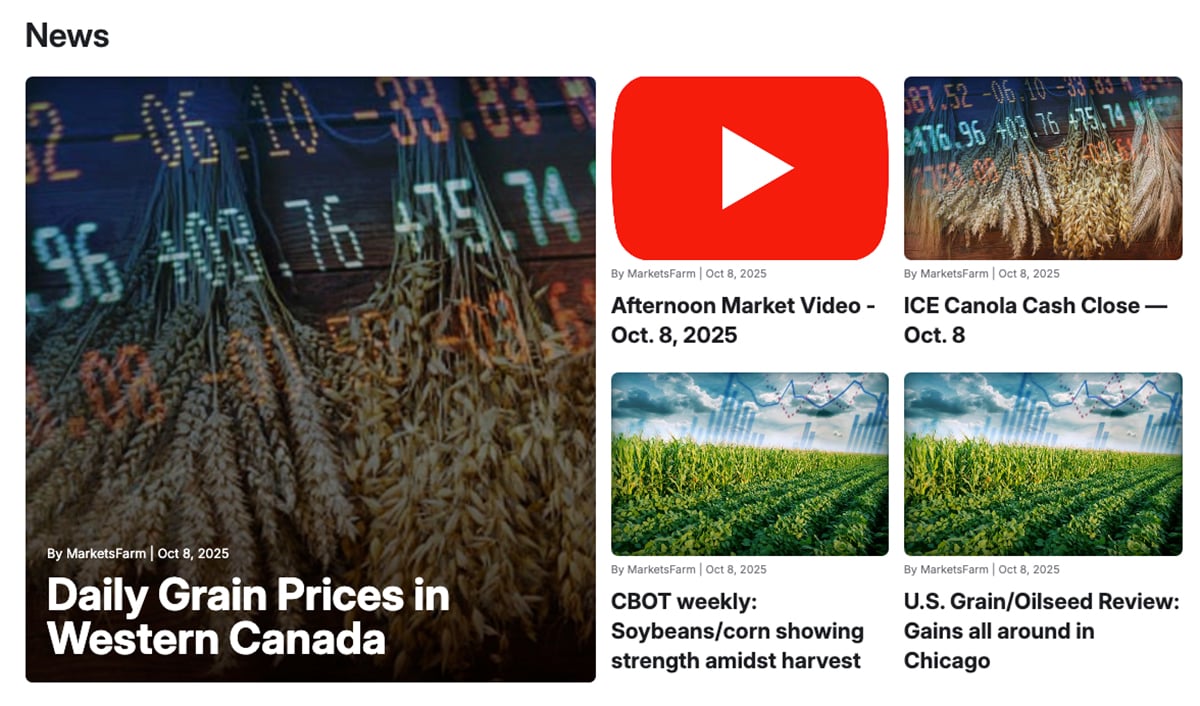If bad weather hits the world’s crops next spring and summer, prices could shoot much higher than this year’s levels.
So why do some marketing advisers suggest locking in some 2008-09 crop prices soon?
“If guys are doing their budgets and they realize they’re going to be paying more for inputs, for fertilizer and fuel, and it’s going to be an expensive crop to grow, but they can still lock in a profit today, a lot of guys might want to do that,” said Alberta Agriculture analyst Charlie Pearson.
Read Also

VIDEO: Catch up with the Western Producer Markets Desk
The Western Producer Markets Desk provides daily updates on agricultural markets, with recent video commentary including looks into canola, wheat, cattle and feed grains.
Locking in prices for a portion of the 2008 crop could be a prudent hedge against a possible price slump a few months from now, even though there’s little reason to expect prices to fall.
“If (U.S.) winter wheat comes out of dormancy in March and bad weather hits it, this thing turns into a rocket ship all over again,” said Mike Jubinville of Pro Farmer Canada.
On the other hand, the price of wheat and other crops are at or near the peak of multi-decade trading ranges, which can signal risk to the assumption of strong prices in the future.
“There is a significant potential for a rebound in production next year that could change this picture dramatically,” said Jubinville.
Pricing 2008 wheat now might not be an obvious choice because the futures market has discounted next year’s crop on the expectation of larger production. For instance, the hard red spring wheat futures price on the Minneapolis Grain Exchange on Oct. 22 was $8.85 US per bushel for December 2007, but only $7.09 for December 2008. Usually, contract months further out have higher prices because of carrying costs.
But the point of hedging, as opposed to speculation, is to reduce risk, not maximize potential gains.
“With new-crop wheat flirting with seven bucks a bu. (at the farmgate), guys should take a real look at scaling in some hedges and holding them,” said Errol Anderson of Pro Market Communications.
Anderson said all the major crops are offering good 2008-09 prices. Canola can be locked in by various means at between $9 and $10 a bu., and barley prices are high.
“All of these are real opportunities,” said Anderson.
Farmers don’t need to lock up everything. If they want to capture the present 2008-09 futures levels but wait for better basis levels, they can do so with either forward contracts or with derivatives.
“If basis levels are wide, lock the futures and then when they find a good basis, sign a good deferred delivery contract at that time, and get out of the hedge with your broker,” said Anderson.
“It allows you some time to shop for basis.”
Hedging 2008-09 milling wheat is complicated and can be riskier for prairie farmers because it has to be done through the Canadian Wheat Board. The CWB’s basis price contract can lock in 2008-09 wheat futures prices, but the board’s basis level will not be set until February, leaving an unknown factor floating over the final price.
“It’s unfortunate, but it’s our system,” said Anderson.
He thinks late 2008 futures prices are attractive and there’s no reason not to take them, if a producer wants to protect post-harvest prices.
But Jubinville and Pearson both say waiting won’t hurt.
“I’m prepared to wait a little further into the winter, into January,” said Pearson.
“I can’t see things falling out of bed in the next three to six months.”
Jubinville has locked in no 2008-09 prices yet, “but I’m giving it very serious consideration, watching the charts for a potential breakdown in the markets.”
Pearson said it is impossible to know what prices will be next fall, so producers need to decide how much they are going to focus on minimizing risk as opposed to leaving the door open to opportunity.
“Prices could easily be a lot higher a year from now than they are today, but we’re at historically high levels and if we have good conditions next year, there’s a pretty good chance we could have lower prices as well,” said Pearson.















